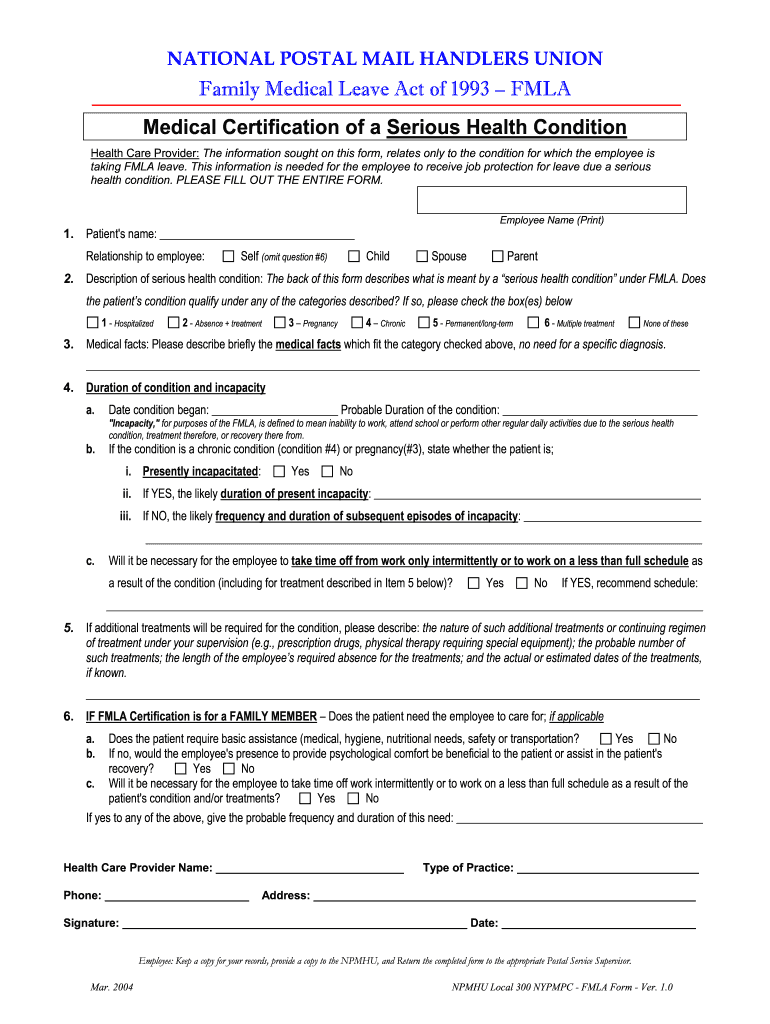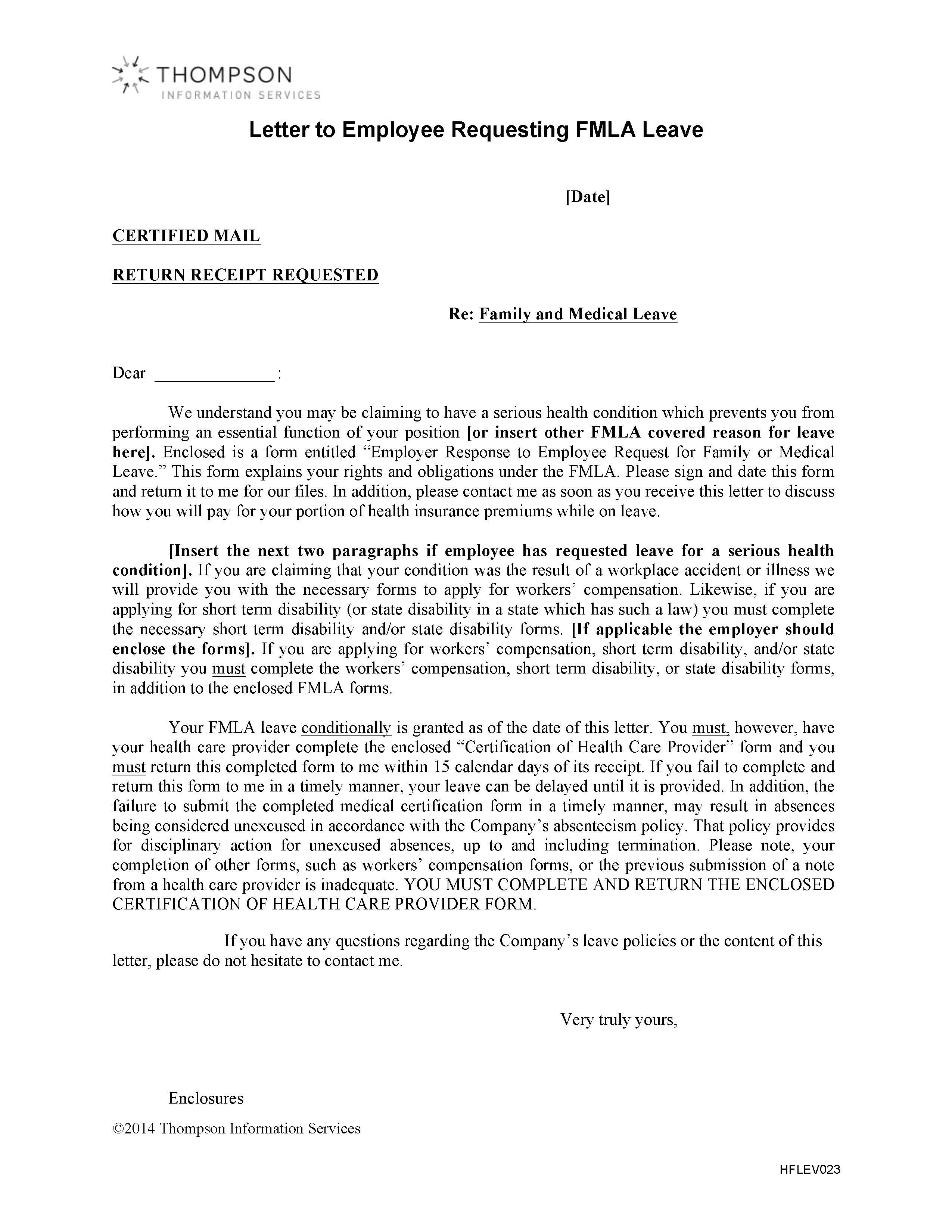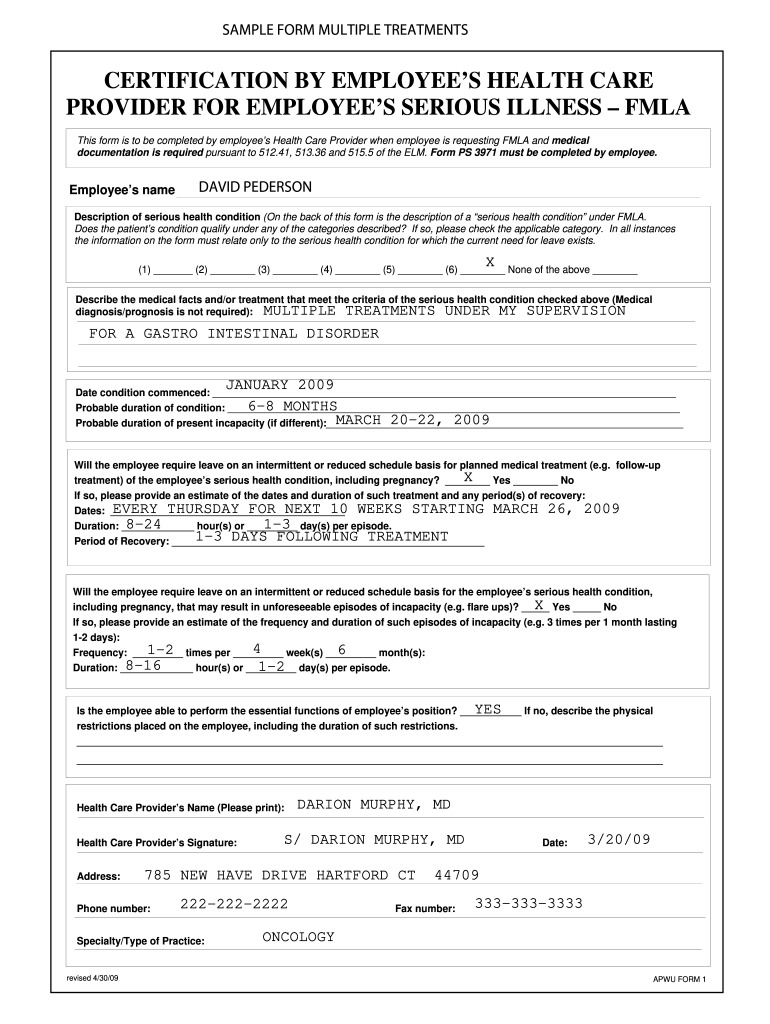5 Tips to Get Your Doctor to Approve FMLA Paperwork

Dealing with a health condition that requires a leave of absence from work can be stressful, especially when it comes to getting the necessary documentation for a Family and Medical Leave Act (FMLA) request approved. FMLA, designed to help employees manage personal or family health issues, isn't always straightforward, particularly when it comes to navigating medical and HR bureaucracy. Here, we'll explore five effective strategies to ensure your doctor supports your FMLA paperwork, making the process as smooth as possible.
Understanding FMLA

Before we delve into the strategies, understanding FMLA is crucial:
- Eligibility: Employees must have worked for the company for at least 12 months and have accumulated at least 1,250 hours over the past year.
- Coverage: FMLA covers serious health conditions that make you unable to perform your job functions.
- Duration: You can take up to 12 weeks of unpaid leave within a 12-month period, or up to 26 weeks for military caregivers.
Now, let’s look at how to approach your doctor effectively:
1. Prepare Before Your Appointment

- Documentation: Gather all relevant medical records, test results, and notes from previous appointments that detail your condition.
- Know Your Rights: Familiarize yourself with FMLA regulations so you can accurately inform your doctor about the type of leave you need.
- Questions List: Prepare a list of questions to ensure you cover all necessary aspects with your doctor.
Having all this at hand shows your doctor that you’re serious about the process, and it helps them in filling out the paperwork accurately.
2. Communicate Clearly

Medical professionals have a lot on their plates, so clear communication can make a significant difference:
- Be Specific: Clearly explain your symptoms, the impact on your work, and why you need FMLA.
- Use Medical Terms: If you know them, use medical terminology related to your condition; this makes it easier for your doctor to connect your experience to a diagnosable issue.
- Provide Context: Describe how your work demands exacerbate your condition or how the leave could help manage it better.

💡 Note: Remember, your doctor might not be familiar with FMLA regulations. Providing them with context can assist in providing an accurate medical certification.
3. Offer Support

Your physician might need help to fill out FMLA forms correctly:
- Provide Forms: Bring FMLA certification forms provided by your HR department.
- Ask About Support: Ask if they need any assistance or if there are specific documents they require to complete the certification.
- Follow Up: After the appointment, follow up with your doctor’s office to ensure the paperwork has been processed and submitted on time.
| What Your Doctor Might Need | How You Can Help |
|---|---|
| Medical Records | Provide copies of recent medical records |
| History of Condition | Bring documentation of your condition’s progression |
| FMLA Certification Forms | Complete as much as you can before handing them over |

4. Be Honest and Complete

Transparency is key when it comes to FMLA approval:
- Disclose All Health Issues: Even if you think some symptoms are minor or unrelated, they can provide a fuller picture of your health needs.
- Honesty with Your Doctor: Your doctor needs to know the truth to provide an accurate medical certification.
- Avoid Exaggeration: Exaggerating your condition can lead to complications with your employer or in legal proceedings.
💡 Note: Accuracy in describing your health condition can prevent future issues with FMLA requests or with your employment.
5. Follow Through

Don’t assume everything is set once the forms are submitted:
- Check with HR: After your doctor submits the forms, ensure HR has received and accepted them.
- Monitor Approval: Keep an eye on your leave status and know when your leave begins and ends.
- Appeal if Necessary: If your FMLA request is denied, be prepared to appeal with more documentation or by providing additional context.
Ensuring you follow through ensures that your FMLA leave is well-documented and recognized by your employer, preventing any potential disputes or misunderstandings.
Having your doctor approve your FMLA paperwork is vital for ensuring you can take the leave you're legally entitled to without jeopardizing your job security. By preparing in advance, communicating effectively, offering support, being transparent, and following through on the process, you can increase your chances of a successful FMLA request. Remember, it's not just about filling out forms; it's about establishing a clear medical need for your leave, which benefits both you and your employer by providing clarity and legal protection.
What conditions qualify for FMLA leave?

+
FMLA covers serious health conditions that make you unable to perform your job functions. This includes chronic conditions, pregnancy-related conditions, recovery from major surgery, or inpatient hospital care.
Can my doctor refuse to fill out FMLA forms?

+
Technically, yes, but doctors are generally obliged to assist patients with employment-related health issues, including FMLA requests. If they refuse, you might need to seek another medical opinion or speak to their office manager about the necessity of their cooperation.
What if my FMLA request is denied by my employer?

+
If your FMLA request is denied, you have the right to appeal the decision. You can gather more medical evidence or consult with an employment lawyer to ensure your rights are upheld.
How long does it take to get FMLA approved?

+
The timeline for FMLA approval varies. While some requests might be approved swiftly, others might take several weeks, especially if more medical documentation is needed or if there are disputes with the employer.
Can I take FMLA intermittently?

+
Yes, FMLA can be taken intermittently. This means you can take leave in separate blocks of time or by reducing your usual work hours when medically necessary for your condition or to care for a family member.



